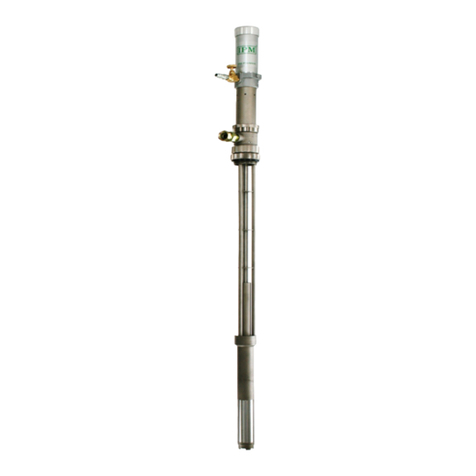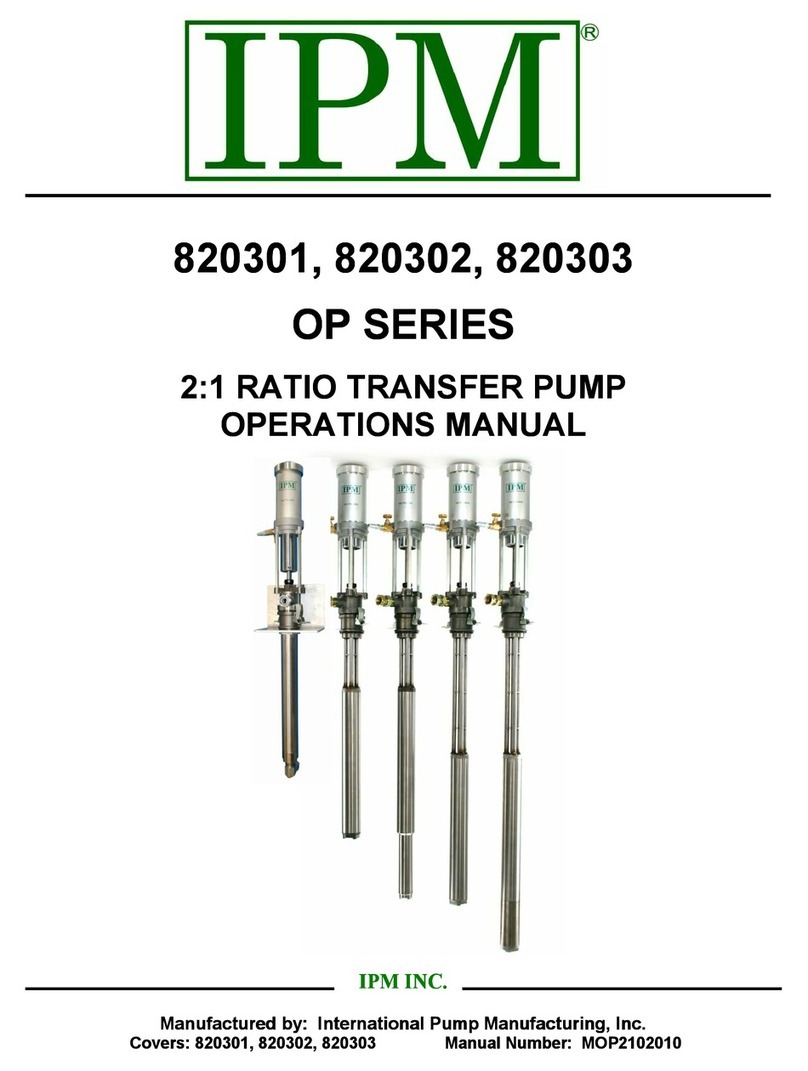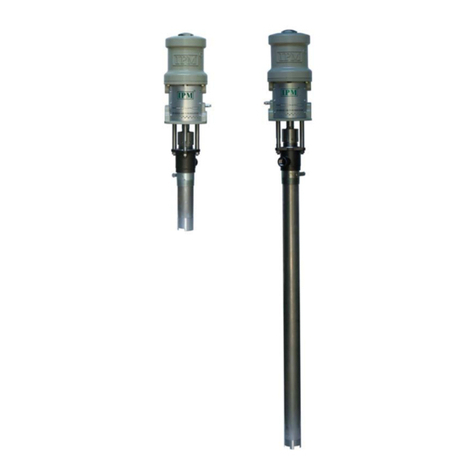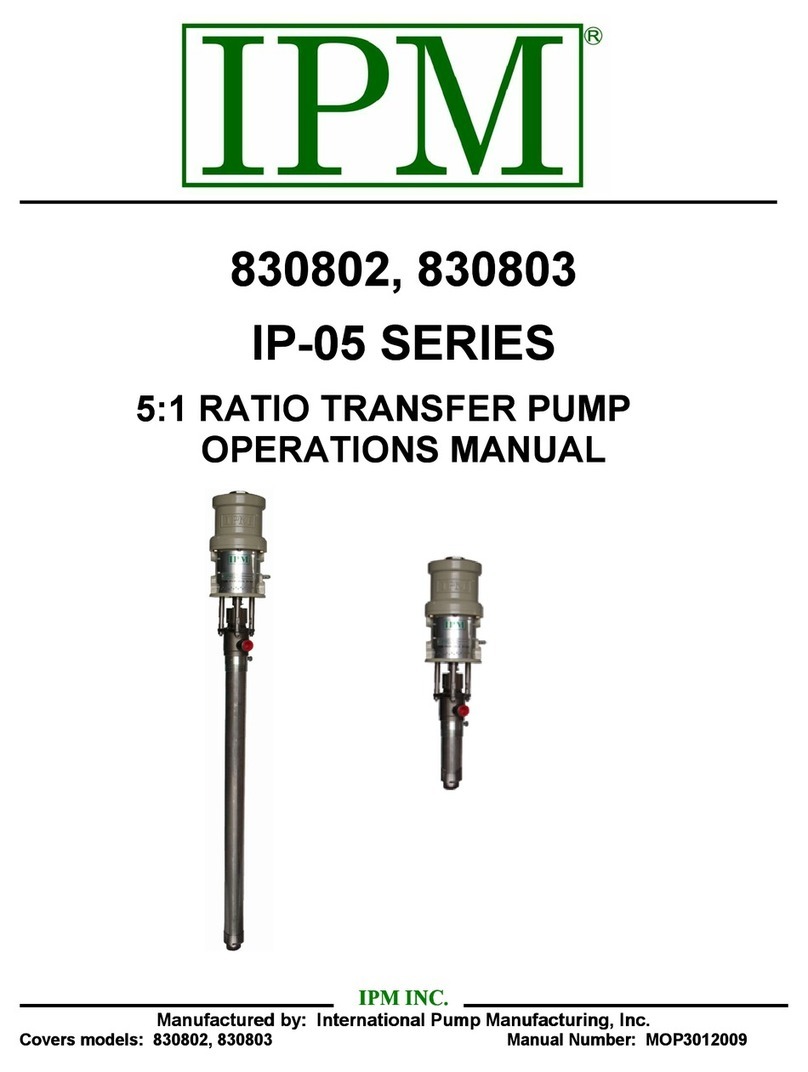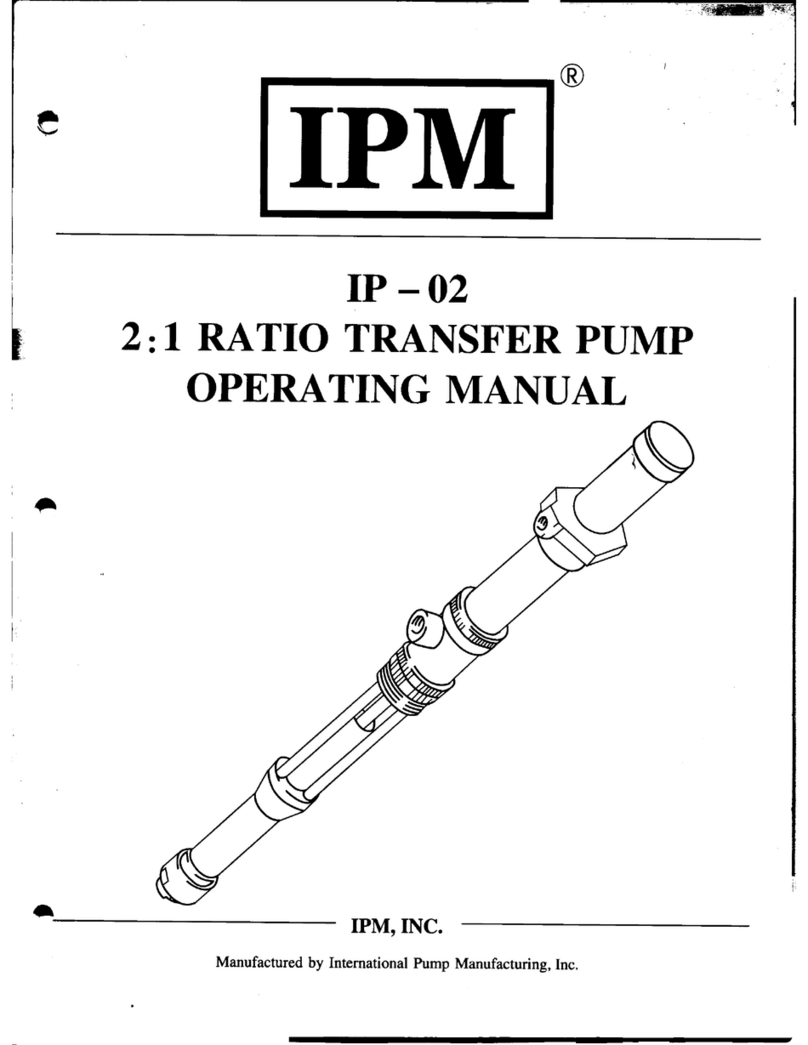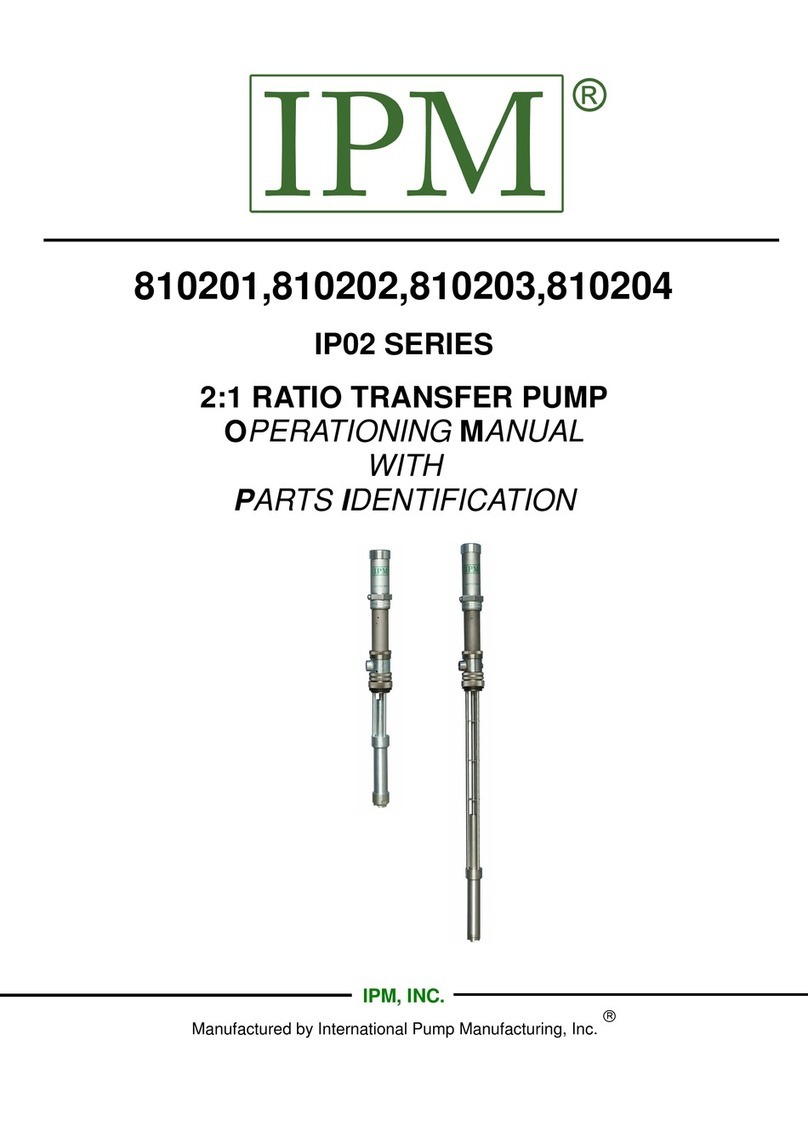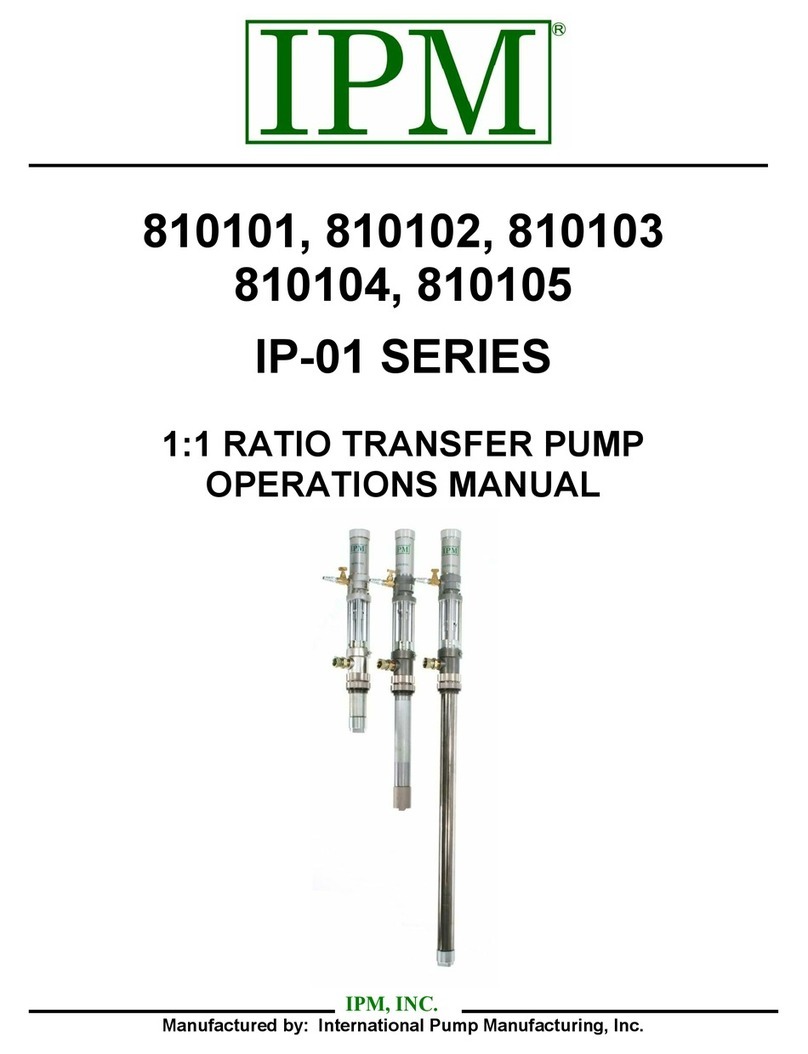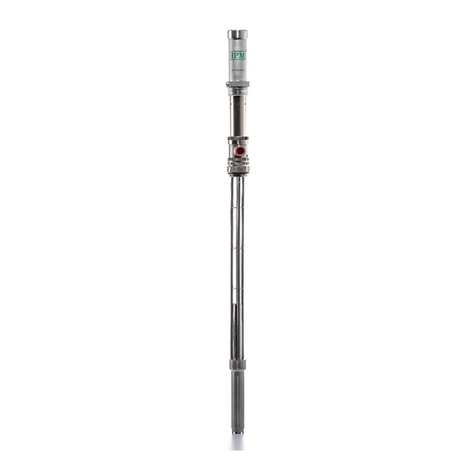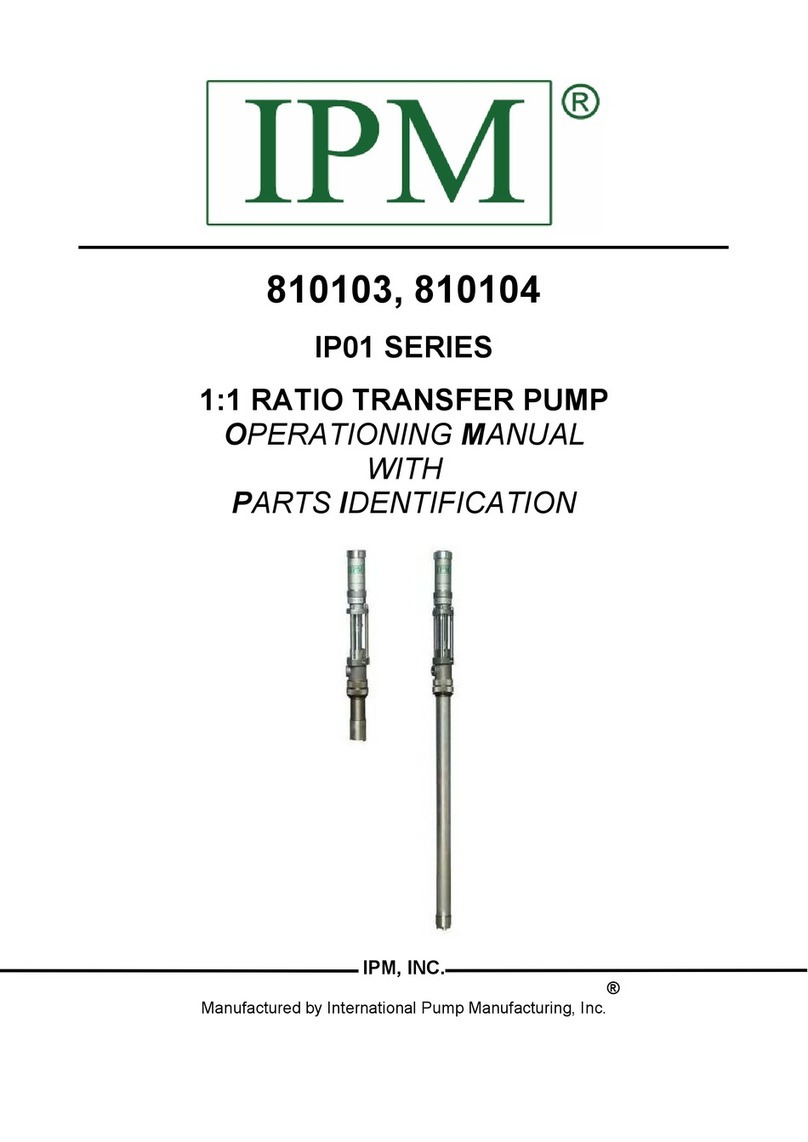
5
Pressure specification
The maximum working pressure of this equipment for fluids and air is 180 psi (12.5 bars). Ensure
all equipment and accessories used with this pump are rated to withstand the maximum working
pressure of this pump. Never exceed the maximum working pressure of the pump, hose lines or
any other components attached to the pump itself.
Procedure for pressure relief
In order to avoid the risk of serious injury to operators from splashing/spraying chemicals, the
following safety procedures should be used. This procedure should be used when shutting down
the pump, performing general maintenance, repairing a pump or other components of the system,
replacing components or when pumping operation is ceased.
1 Close the air valve to the pump.
2 Use the air bleed down valve (see INSTALLATION) to relieve the air pressure in the system.
3 Relieve the fluid pressure by holding a grounded metal pail in contact with the metal part of
the fluid dispense valve and slowly opening the valve.
4 With a container ready to catch the fluid, open the drain valve (see INSTALLATION).
5 It is a good practice to leave the drain valve open until it is time to dispense fluid again.
If you are unsure that the fluid pressure has been relieved due to a blockage in a component or a
hose, carefully relieve the pressure by carefully loosening the hose end coupling to allow the fluid
pressure to escape slowly. After the pressure has been relieved, the fitting can then be removed
and any blockages removed. If the pump is to remain idle for only a short period of time, it is not
necessary to empty the wet cup.
Flush the pump before initiating operation
1 The pump is tested with lightweight DOP oil, which is left in to protect the pump parts. If the
fluid you are pumping may become contaminated by oil, flush oil from pump with a
compatible solvent before use. Follow the flushing instruction below.
2 When pumping fluids that set up or solidify, flush the system with a compatible solvent as
often as necessary to remove build-up of solidified chemicals in the pump or hoses.
3 If the pump is being used to supply a circulating system, allow the solvent to circulate through
the entire system for at least 30 minutes every 48 hours or more often if necessary to prevent
settling and solidification of chemicals.
4 Always fill the wet-cup 1/2 full of throat seal liquid (TSL) or compatible solvent to keep the
fluid from drying on the displacement rod and damaging pump throat packing.
5 Lubricate the throat packing frequently, when you are pumping a non-lubricating fluid or are
shutting down for more than one day.



















